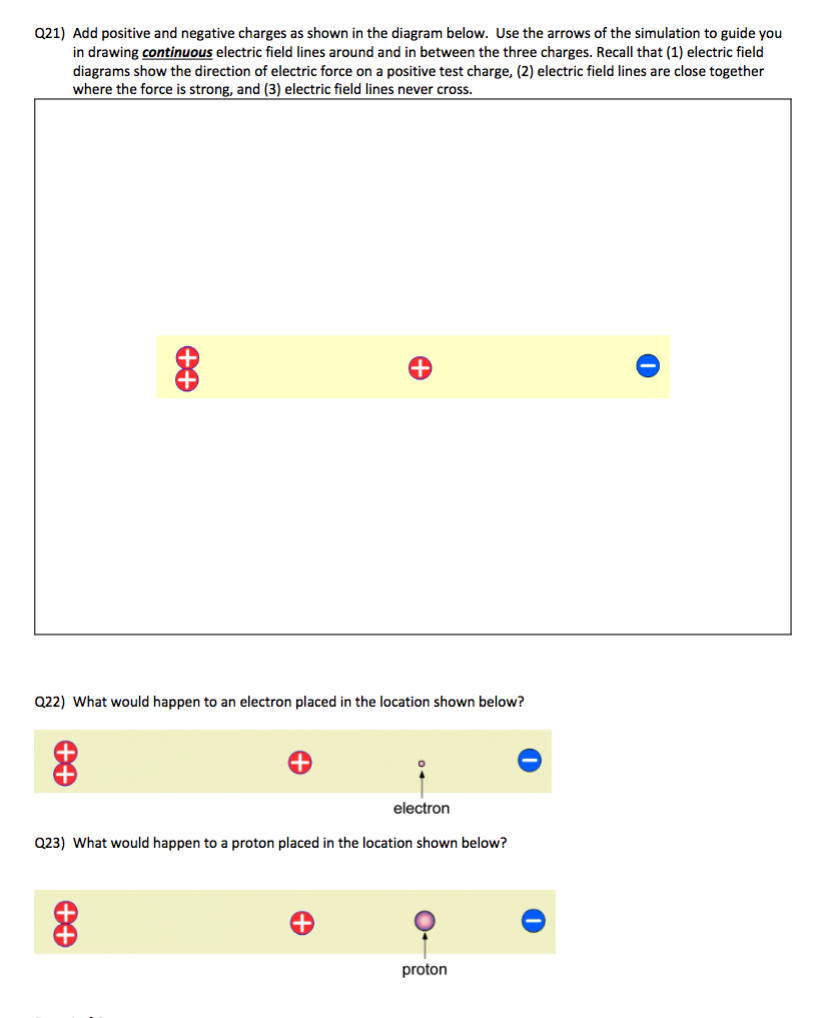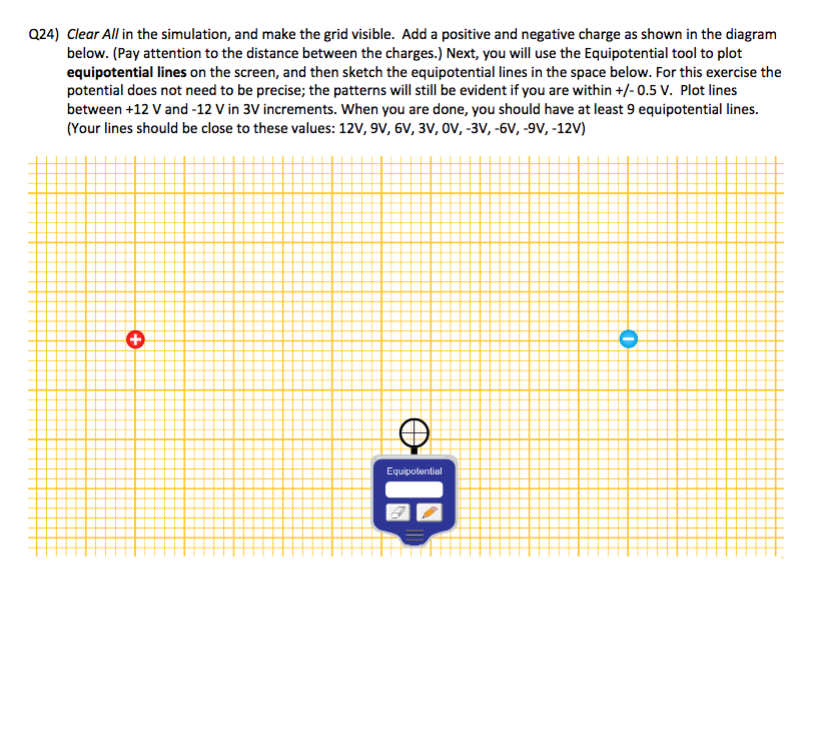Answered step by step
Verified Expert Solution
Question
1 Approved Answer
Q21) Add positive and negative charges as shown in the diagram below. Use the arrows of the simulation to guide you in drawing continuous



Q21) Add positive and negative charges as shown in the diagram below. Use the arrows of the simulation to guide you in drawing continuous electric field lines around and in between the three charges. Recall that (1) electric field diagrams show the direction of electric force on a positive test charge, (2) electric field lines are close together where the force is strong, and (3) electric field lines never cross. ++ + Q22) What would happen to an electron placed in the location shown below? ++ + electron Q23) What would happen to a proton placed in the location shown below? ++ + proton Q24) Clear All in the simulation, and make the grid visible. Add a positive and negative charge as shown in the diagram below. (Pay attention to the distance between the charges.) Next, you will use the Equipotential tool to plot equipotential lines on the screen, and then sketch the equipotential lines in the space below. For this exercise the potential does not need to be precise; the patterns will still be evident if you are within +/- 0.5 V. Plot lines between +12 V and -12 V in 3V increments. When you are done, you should have at least 9 equipotential lines. (Your lines should be close to these values: 12V, 9V, 6V, 3V, OV, -3V, -6V, -9V, -12V) + Equipotential 0 Q25) Create a simulation of two parallel charged plates, similar to the one shown below. negatively charged plate positively charged plate a) Draw the electric field lines in between the two plates. What do you notice about the field lines in the central region between the plates? b) Draw the equipotential lines between the plates. (Decide on an increment for the voltage and label the voltages on your diagram. Use dotted lines). What do you notice about the lines of equipotential compared to the field lines? c) Two positively charged particles A and B, are placed in between the charged plates. Particle B has three times the charge and five times the mass of particle A. (QB 3Q and m = 5mA) Which particle, A or B, will experience more force? Which formula did you use to guide your thinking? Which particle, A or B, will experience more acceleration? Which formula did you use to guide your thinking? c 0 0 0 0 0 0 0 0 positively charged plate
Step by Step Solution
There are 3 Steps involved in it
Step: 1

Get Instant Access to Expert-Tailored Solutions
See step-by-step solutions with expert insights and AI powered tools for academic success
Step: 2

Step: 3

Ace Your Homework with AI
Get the answers you need in no time with our AI-driven, step-by-step assistance
Get Started


